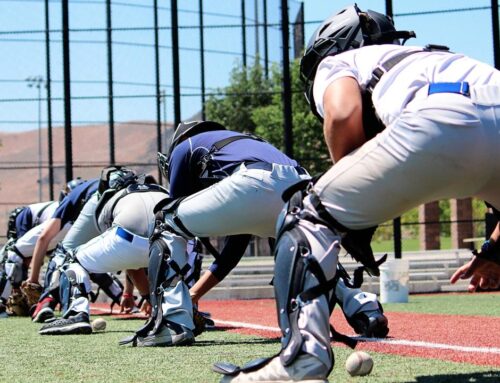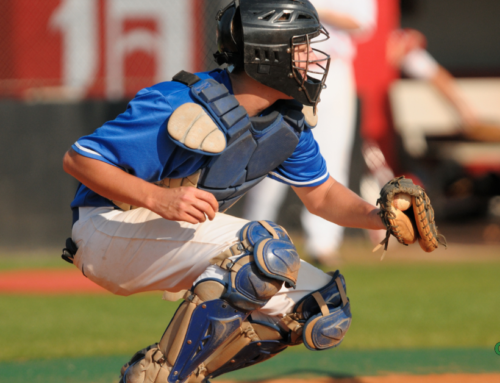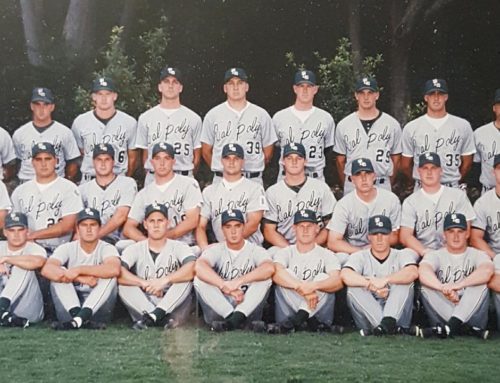
Whether you’re a seasoned pro or just getting started behind the plate, one thing’s for sure: having the right catcher mitt can make all the difference in your game. But with the dizzying array of options out there, finding the perfect mitt can feel like searching for a needle in a haystack. Don’t worry; we’ve got your back! We’re going to be your trusty guide on this journey, helping you navigate the world of baseball catcher mitts. We’ll walk you through the essential factors to consider, the nitty-gritty details, and some expert tips to ensure you snag the mitt that suits you like a glove.
Picture this: it’s the bottom of the ninth, two outs, and the opposing team’s star hitter is at the plate with the game on the line. As a catcher, you’re the last line of defense, and your mitt is your most crucial tool. So, when it comes to choosing the right catcher mitt, it’s not just about style; it’s about performance, comfort, and that indescribable feeling when a fastball hits your pocket just right.
We’ve all seen those incredible plays on the diamond where the catcher’s mitt seems like an extension of their hand, effortlessly snagging pitches and keeping runners in check. Ever wonder what makes that possible? Well, it all starts with choosing the right catcher mitt. Whether you’re a parent shopping for your Little Leaguer or a high school star looking to elevate your game, we understand that finding the best mitt can be a bit overwhelming. But fear not! We’re going to simplify the process and break down the essentials of selecting a catcher mitt that will feel like an old friend every time you step onto the field.
Key features to consider when choosing a baseball catcher mitt
When it comes to selecting the ideal catcher mitt, you’ll want to pay close attention to a few essential features. First and foremost is the mitt’s size. Catcher mitts come in various sizes, typically ranging from 31 to 34 inches. The right size is crucial for ensuring a secure fit on your hand and effective catching. For youth players, opt for a smaller size, while adult catchers may prefer a larger mitt for improved catching and pitch control.

Another critical aspect to consider is the type of padding used in the mitt. The padding plays a significant role in absorbing the impact of fastballs and off-speed pitches. Most mitts feature padding made from materials like foam or gel, with varying levels of thickness. The right balance between protection and feel is essential, so it’s worth trying out different padding options to find what suits your preferences and needs best.
Lastly, don’t overlook the webbing design of the mitt. The webbing not only affects the mitt’s appearance but also its functionality. Common webbing types include the traditional two-piece and single post, each offering a unique feel and performance. Two-piece webbing provides flexibility and control, while single post webbing offers a more secure pocket. Your choice here depends on your catching style and what feels most comfortable for you. Ultimately, when selecting a catcher mitt, it’s essential to find the right combination of size, padding, and webbing that matches your playing style and ensures you’re ready to excel behind the plate.
Determining the right size of a catcher mitt for me
Choosing the right size for your catcher mitt is akin to finding a glove that fits perfectly. The first step in determining the correct size is to measure the circumference of your catching hand. To do this, use a flexible measuring tape or a piece of string, wrap it around the fullest part of your hand, which is usually just below the knuckles, and take note of the measurement in inches. This measurement is your hand circumference and will serve as a guide to selecting the appropriate mitt size.
Once you’ve measured your hand circumference, it’s time to match it with the right catcher mitt size. Typically, as was stated above, catcher mitts come in sizes ranging from 31 to 34 inches. Here’s a general guideline to help you find the perfect fit:
- If your hand circumference measures around 7 to 7.5 inches, consider a youth-sized mitt, typically around 31 to 32 inches.
- For a hand circumference of 7.5 to 8 inches, a mid-sized mitt around 32 to 33 inches should work well.
- If your hand measures above 8 inches in circumference, opt for a larger mitt, typically in the 33 to 34-inch range.
Remember that these size ranges are guidelines, and personal preferences can play a role in your decision. If possible, try on mitts in different sizes to see which one feels the most comfortable and secure on your hand. Keep in mind that a catcher mitt should fit snugly but not be so tight that it restricts your hand’s movement. Ultimately, finding the right size for your catcher mitt ensures a better catching experience, improved pitch control, and enhanced confidence behind the plate, so take the time to get it just right.
Common mistakes to avoid when choosing a catcher mitt
Selecting the right catcher mitt is crucial for a catcher’s performance, so it’s important to be aware of common mistakes that can lead to suboptimal choices. One of the most common errors is neglecting proper sizing. Choosing a mitt that doesn’t fit your hand properly can hamper your ability to catch and control pitches effectively. Avoid the temptation to buy a mitt that’s too large, thinking it will offer a larger catching area, as this can result in discomfort and poor performance. Conversely, opting for a mitt that’s too small can restrict your movement and lead to missed opportunities behind the plate. Always prioritize finding the correct size for your hand.
Another mistake to steer clear of is overlooking the quality of materials and construction. Some catchers may opt for lower-priced mitts without considering the long-term implications. Cheaper mitts often use inferior materials that can wear out quickly and provide less protection against high-velocity pitches. Investing in a higher-quality mitt made from premium leather or synthetic materials can significantly extend its lifespan and offer better performance. Remember, a catcher mitt is an investment in your game, so choose wisely to ensure it stands up to the rigors of the sport. The saying “you get what you pay for” holds strong with mitt selection.
Lastly, don’t fall into the trap of prioritizing aesthetics over functionality. While an attractive mitt can be enticing, it’s essential to focus on the mitt’s features and performance capabilities first and foremost. Choosing a mitt solely based on its appearance may lead you to overlook critical factors like padding, webbing design, and pocket depth, which can have a more significant impact on your catching abilities. Instead, assess mitts based on their suitability for your playing style, comfort, and functionality. Remember, the best catcher mitt for you may not always be the flashiest one on the shelf, but it will be the one that enhances your performance and keeps you comfortable during those high-pressure plays behind the plate.
Break in a new catcher mitt effectively
Breaking in a new catcher mitt is a rite of passage for any baseball player. A brand-new mitt can feel stiff and unwieldy, but with the right techniques and a bit of patience, you can transform it into a reliable and comfortable extension of your hand. The key to breaking in a catcher mitt effectively is to gradually shape it to your liking without compromising its integrity. Here’s how to get started on the journey to a perfectly broken-in mitt.
One of the most popular methods for breaking in a catcher mitt is using glove oil or conditioner. Start by applying a small amount of glove oil or conditioner to a soft cloth or sponge. Gently rub the oil all over the mitt’s leather, paying extra attention to areas like the pocket and the edges of the webbing. After applying the oil, use a ball or a mitt mallet to repeatedly pound and shape the pocket. This helps soften the leather and create a secure, rounded pocket for catching pitches. Be patient, as the process may take several weeks of practice and conditioning to achieve the desired level of flexibility.
Another effective way to break in your catcher mitt is to use it regularly during practice sessions or catch with a friend. The more you use your mitt, the more it molds to the shape of your hand and becomes more pliable. Catching balls, whether during bullpen sessions or in casual games of catch, helps stretch the leather and create a natural pocket. Remember to focus on catching balls properly to avoid unnecessary stress on the mitt. With time and consistent use, your mitt will become your trusted ally behind the plate, providing the perfect balance of flexibility and control. So, don’t rush the process, and enjoy the journey of breaking in your catcher mitt to perfection.
Maintenance tips for prolonging the lifespan of a catcher mitt
Taking proper care of your catcher mitt is essential to ensure it remains in top-notch condition season after season. One of the first maintenance steps is to keep your mitt clean. After each game or practice, wipe down the mitt with a damp cloth to remove dirt, sweat, and grime. Avoid using harsh chemicals or excessive water, as these can damage the leather. Once clean, let the mitt air dry naturally, away from direct sunlight or heat sources, to prevent leather from drying out and cracking.
Conditioning your catcher mitt is another crucial aspect of maintenance. Leather mitts, in particular, benefit from periodic conditioning to keep the material supple and prevent it from becoming brittle. Use a specialized glove conditioner or glove oil, applying a thin layer to the mitt’s leather. Massage it in gently, paying attention to areas like the pocket and the webbing. Conditioning should be done sparingly, usually a few times a season or as needed, to avoid over-softening the leather.
By following these maintenance tips, you can extend the lifespan of your catcher mitt, ensuring it remains reliable and ready for action throughout your baseball career. Proper care not only preserves the mitt’s quality but also enhances your performance behind the plate.
In the world of baseball, your catcher mitt is more than just a piece of equipment; it’s your trusted partner in the game. By now, you’ve learned the ins and outs of choosing the perfect mitt that fits your hand like a glove, the art of breaking it in for peak performance, and the common pitfalls to avoid in your selection process. Remember to prioritize the right size, quality materials, and functionality over aesthetics, and maintain your mitt diligently to ensure it stands the test of time. With the right catcher mitt by your side, you’ll be ready to tackle every pitch, make those game-changing plays, and create unforgettable moments on the field. So, gear up, step onto the diamond, and let your mitt become an extension of your skills and passion for the game. Play ball!






